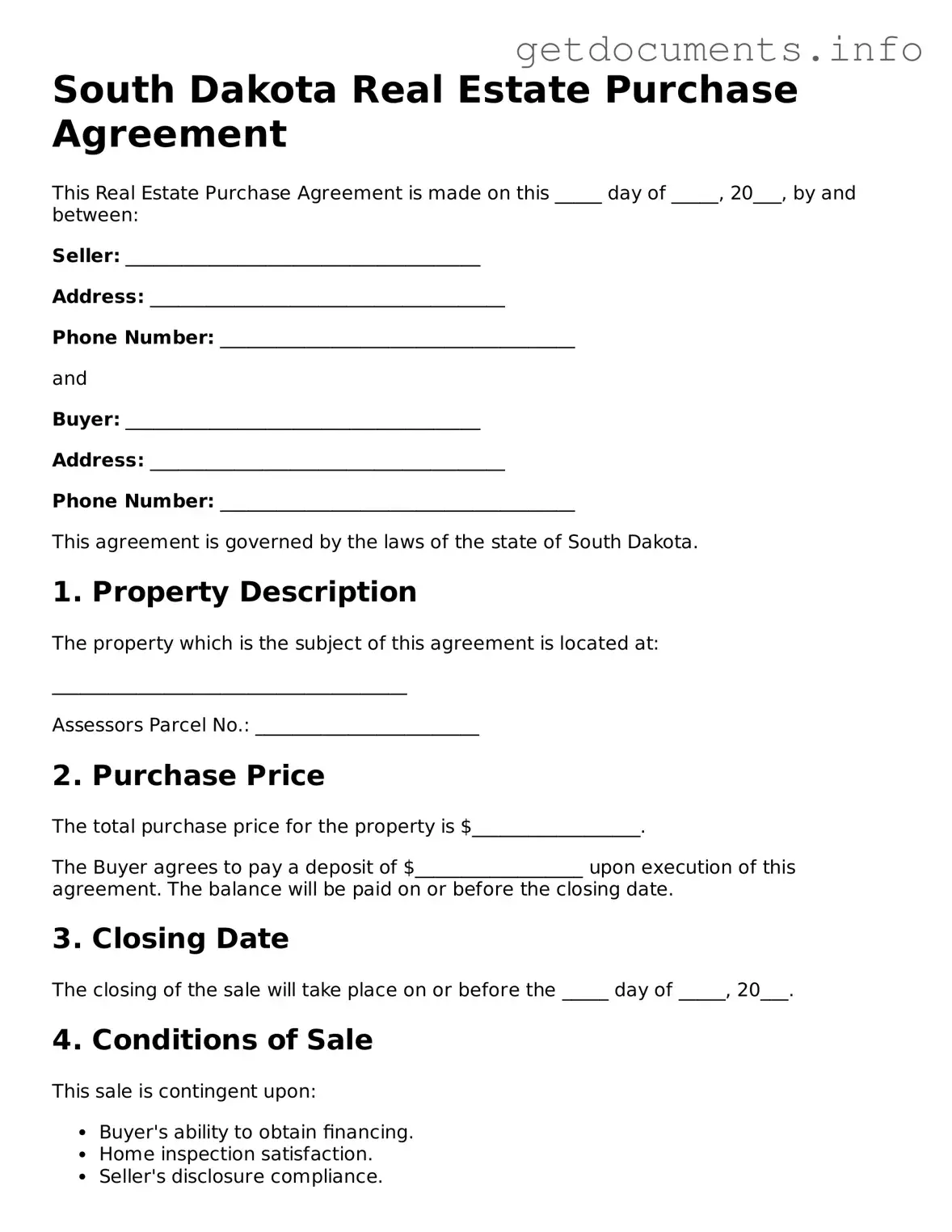Free Real Estate Purchase Agreement Template for South Dakota
The South Dakota Real Estate Purchase Agreement is a legal document that outlines the terms and conditions for the sale of real property in South Dakota. This form serves as a binding contract between the buyer and the seller, detailing important aspects such as the purchase price, property description, and closing date. For those looking to initiate a real estate transaction, completing this form is an essential step; click the button below to get started.
Access Real Estate Purchase Agreement Editor
